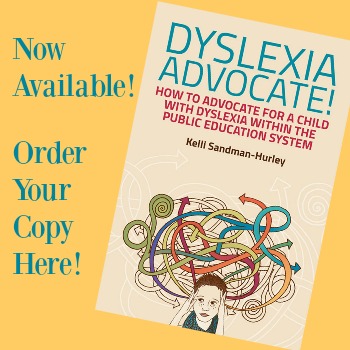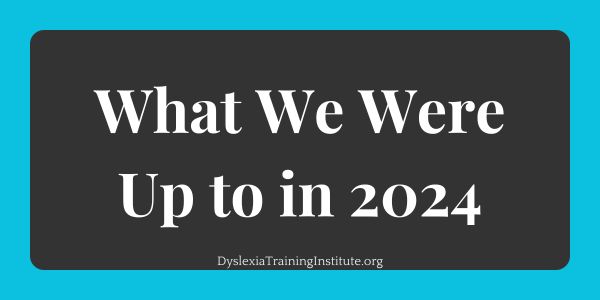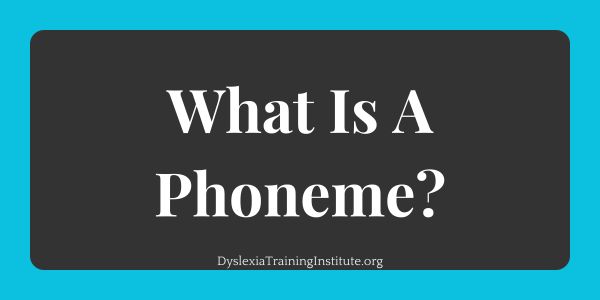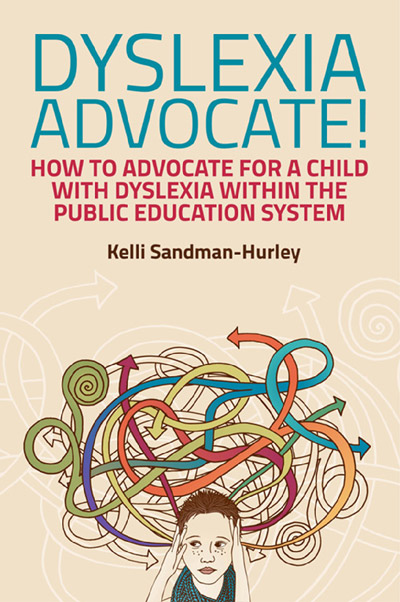
The goals of an IEP document can be tedious and even boring to pore over. Sometimes they are just glossed over, or even worse, totally ignored and just shared as an after thought during the IEP meeting. But goals are the window into what the IEP team understands about the identified and individual needs of your student. They highlight what the goal writer, who is often the person providing the instruction, knows about the reading and spelling process. The goals are what your student is going to learn over the course of an entire year, they deserve your attention. And just like services, goals have needs too.
Dyslexia Goals Have Needs Too
Need #1: They need to make sense.
If you have to read it more than two times to try to figure out what it means, it needs help.
Need # 2: They need to have high expectations for progress (but reasonable).
The purpose of IDEA is to close the achievement gap. It is not unreasonable to expect at least a year’s progress in a year’s time, but to close the gap, we often need more progress. However, four years progress is not reasonable.
Need #3: They need to be pedagogically sound.
The person teaching the student is supposed to understand how to teach reading and spelling. If they do not have a solid foundation in how to teach a student with dyslexia or the reading process itself, it will be evident in the goals.
Need #4: They need to respond directly to identified needs.
If the student has six needs in the areas of reading and spelling, they have six goals, period. While some of the areas of need can be taught simultaneously, they need to be measured separately. (And yes, spelling is a need).
Need #5: They need to be understood by anyone who reads them.
It is always a possibility that the teacher will change or the student will move during the course of an IEP, can anyone who picks up the IEP understand the terminology in the goal?
Need #6: They need to be individualized.
While drop-down and template goals are convenient, they are not individualized. Goals should be a direct result of the individual student and his or her academic needs. If template goals are used, they must be modified to fit the student. Also, if a template goal or drop-down goal does not exist for the need, then create the goal. There is nothing preventing the writing of original goals.
Need #7: They need to be reviewed often.
Benchmarks (if used) should be monitored. If progress is not being made on goals throughout the year, then the services and goals need to be re-evaluated.
Need #8: They need to be a team effort.
Pre-written goals are a starting point, consider them a suggestion.
Need #9: They need to be SMART.
Specific, Measurable, Achievable, Realistic, and Time-bound.
Let’s take a look at a goal I read recently. For reference I read this goal at least eight times to try to figure it out and then sent it to a colleague to see if had lost my mind:
When given letter patterns containing consonant blends, and letter patterns containing long and short vowel patterns and irregular vowel patterns (i.e. r controlled) in random order, Daniel will orally combine these elements to create recognizable words with 75% accuracy in 2 consecutive trials as measured by teacher observations.
Need #1: It doesn’t make sense.
Need #2: It has low expectations with 75% accuracy and 2 trials. Additionally, only learning long and short vowels is not enough for third grade.
Need #3: The terminology in this goal bears no resemblance to any reading and spelling progression. It is almost nonsensical.
Need #4: It does respond to a need, so we can check this one off.
Need #5: I think it’s safe to say no one understands this goal.
Need #6: This is definitely not from a drop-down menu.
Need #7: This was not included in this goal. Not all districts require benchmarks.
Need #8: According to the parents, this was not a team effort.
Need #9: This goal is far from SMART.
So, what can we do with a goal like this? How about this:
When given a list of 40 3rd grade polysyllabic words that contain closed, open, vowel-consonant-e and r-controlled syllables, Daniel will accurately read the list with 85% accuracy in 3 consecutive trials as measured by curriculum based assessments.
There we go, I think they that goal is satisfied and less needy.
Let’s do one more goal that left me perplexed:
Given grade level instruction and multiple opportunities, he will be able to identify multi-syllabic words in a grade level text with 80% accuracy, as evidenced by his ability to read whole grade level fluency probes, by the end of the IEP term.
Need #1: It doesn’t make sense. What is ‘whole grade fluency’ anyway? What does ‘identify’ mean. Is he actually going to read the word or point it out?
Need #2: There is no way to determine expectations as grade levels and type of reading level is not indicated.
Need #3: The terminology is appropriate when read individually, but together it doesn’t make pedagogical sense.
Need #4: It appears to respond to a need, but is it a fluency need or a decoding need? Remember we don’t know what “identify words’ in this goal actually means.
Need #5: I think it’s safe to say no one understands this goal.
Need #6: This is definitely not from a drop-down menu.
Need #7: This was not included in this goal. Not all districts require benchmarks.
Need #8: According to the parents, this was not a team effort.
Need #9: This goal is far from SMART.
Let’s help this goal assuming that the need for this 7th grade student is to read polysyllabic words:
When given a list of 50 7th grade polysyllabic words that contain free and bound bases as well as affixes, Daniel will accurately identify the morphemes and then read the list with 85% accuracy in 3 consecutive trials as measured by curriculum based assessments.
So, be sure to give the goals the attention they deserve. They are begging to be to fussed over.






My son’s school is using Seeing Stars (a Lindamood-Bell curriculum) to address his decoding and spelling. (He has additional goals for fluency and comprehension.) Currently he’s on box 7, and in a year’s time they aim to be on box 10. Over the course of these levels they will cover some new vowel teams, syllable division, and prefixes and suffixes. Is it enough to specify a goal that lines up with box 10, or should the goal(s) also list the details of boxes 7-9?
Here is the goal the school proposed:
Goal: By annual review, when given 20 two-syllable words through a structured reading program, S will use decoding and encoding skills to read and spell the words with 90% accuracy on 2 of 3 trials as measured by teacher records and data.
Baseline: S is currently using the structured reading curriculum Seeing Stars, and working on the following: oy, au, aw. He is progressing through Book 4 Box 7 (CVCC words: past tense, plural, ce, se, mix).
I asked them to specify that the list of 20 words would cover “all six syllable types”. Should there also be goal(s) specifying that he can read and spell words with vowel teams and affixes? The teacher said that since he will cover these on the way to box 10, we don’t need a goal to list them specifically.
Hello! Was a response ever received to this article?
I think this article is fantastic. I have a 6th year old daughter whose school and reading program appear to significantly be lacking at understanding the progression and what my child should master. My question is what is implied by ‘curriculum based assessments’ as used in each goal? Is this a specific type of assessment – manufacturer? Thanks!